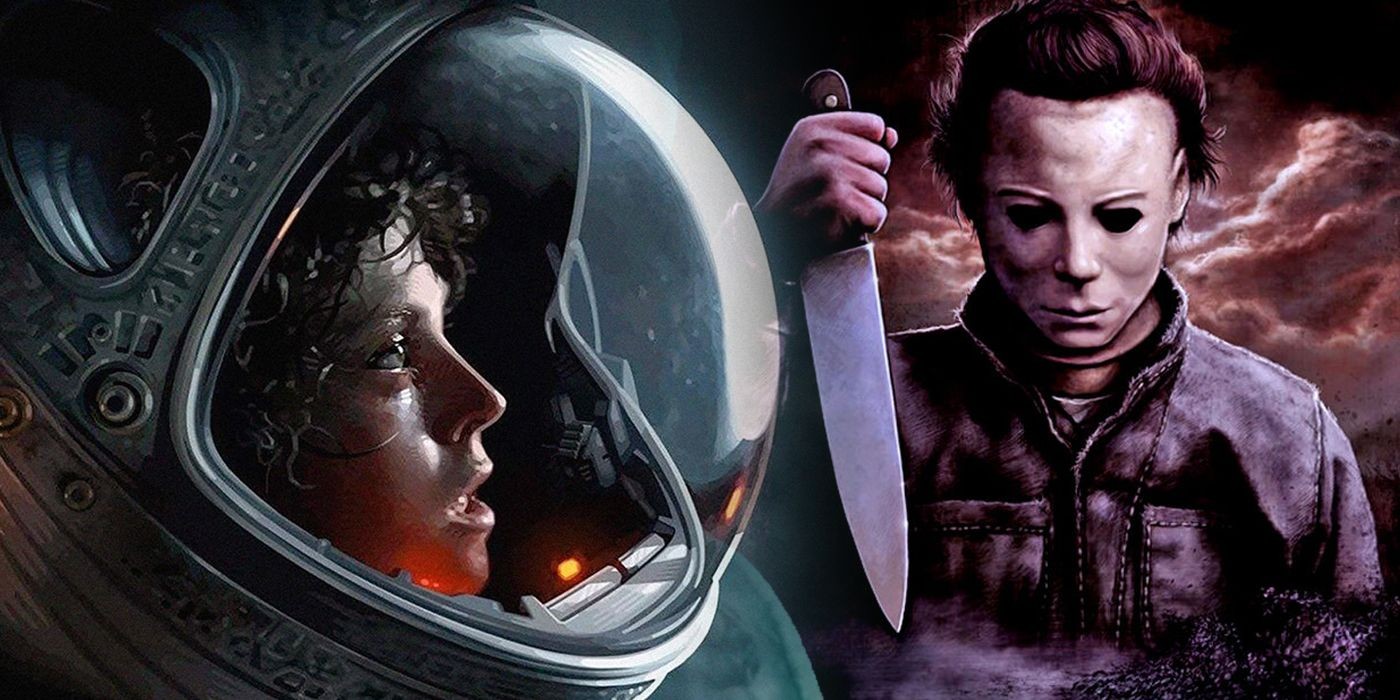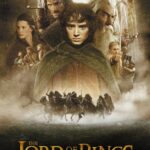Michael Myers, the embodiment of relentless evil in the Halloween film series, has become synonymous with horror for over four decades. Since his chilling debut in John Carpenter’s 1978 masterpiece, Myers has endured a litany of brutal assaults that would permanently stop any mortal being. Stabbings, shootings, explosions, vehicular impacts, and even a gruesome encounter with a scrapyard grinder – nothing seems to keep “The Shape” down for good. Each time audiences believe they’ve witnessed his demise, Michael inevitably rises again, ready to unleash more terror upon the unsuspecting residents of Haddonfield, Illinois.
This seemingly supernatural resilience has fueled countless debates and fan theories. Is Michael Myers truly immortal? Does he possess some dark, otherworldly power that defies conventional understanding? While the Halloween franchise has offered various in-universe explanations, the real answer to why Michael Myers can’t die is a fascinating blend of Hollywood pragmatism and narrative necessity. It turns out, the enduring legacy of Michael Myers is less about mystical curses and more about the very earthly concerns of box office success and contractual agreements.
The Contractual Clause: Hollywood’s Grip on Horror Icons
The Unforeseen Success of Halloween (1978)
The original Halloween film was a cinematic lightning strike. Produced on a shoestring budget of just $300,000, it became a monumental box office sensation, raking in approximately $47 million in 1978 – equivalent to around $200 million in today’s dollars. This unexpected triumph not only launched Jamie Lee Curtis into stardom and solidified John Carpenter’s directorial prowess, but also birthed an entire slasher subgenre within horror. Crucially, it caught the attention of producer Moustapha Akkad, who recognized the immense potential for a continuing franchise.
To secure the longevity of what he envisioned as an ongoing series, Akkad, a shrewd businessman, implemented a contractual safeguard. This now-infamous clause stipulated that Michael Myers could never be definitively killed off within the Halloween films. This preemptive measure was designed to prevent any future writers or directors from prematurely ending the franchise’s central antagonist and, consequently, its profit-generating capacity. The irony is that John Carpenter’s initial concept was for Halloween to be an anthology series, with each installment presenting a different Halloween-themed horror story, and Michael Myers was never intended to become a recurring character.
[ 2:01
](/best-rated-horror-movies-ever/)
Related
The 15 Highest-Rated Horror Movies of All Time, Ranked
From iconic classics like Psycho to modern thrillers like Get Out, these horror movies impressed fans and critics alike to earn the highest ratings.
This contractual mandate persisted even after Moustapha Akkad’s tragic passing in 2005, with his son Malek Akkad taking over the franchise’s stewardship. It has influenced every Halloween sequel and reboot since, including the recent Blumhouse Productions trilogy. Even the seemingly definitive conclusion in Halloween Ends (2022), where Laurie Strode (Jamie Lee Curtis) dispatches Michael into an industrial shredder, is unlikely to be his final curtain call. The contractual reality ensures that Michael Myers, the unstoppable moneymaker, will always find a way to haunt Haddonfield again.
The Curse of Thorn and Supernatural Explanations
Mystical Lore to Justify the Unstoppable
While the contractual clause provides a practical, real-world explanation for Michael Myers’s recurring resurrections, the Halloween franchise itself has also offered in-universe justifications for his seemingly supernatural survivability. As the sequels proliferated throughout the 1980s and 1990s, writers sought to add layers of mythology to Michael’s persona, moving beyond the simple concept of a masked killer driven by inexplicable evil.
](/tales-from-the-crypt-demon-knight-underrated-black-comedy-movie/)
Related
This 29-Year-Old Black Comedy Film Is Perfect for Horror Movie Fans
Horror movie fans would be wise to check out this misunderstood 1995 black comedy film.
The most prominent of these supernatural explanations is the “Curse of Thorn,” introduced in Halloween: The Curse of Michael Myers (1995). This sequel delved into the lore of the Cult of Thorn, an ancient group worshipping a demonic entity known as Thorn. According to the film, Michael Myers was chosen as a child to be the host of this demonic force, imbued with supernatural powers and compelled to ritually murder his entire family on Halloween night, the ancient Celtic festival of Samhain. This curse was presented as the underlying reason for Michael’s seemingly impossible resilience and his relentless killing sprees.
However, the Curse of Thorn storyline is largely considered one of the weaker and more convoluted aspects of the Halloween franchise, and it was effectively retconned in later installments, particularly in the recent Blumhouse trilogy. Laurie Strode, in this new timeline, offers a more psychological and less overtly supernatural explanation: Michael’s evil intensifies with each kill, elevating him to a near-mythical status in the collective consciousness of Haddonfield. Ultimately, whether fans prefer a mystical curse or a more grounded, albeit still heightened, interpretation of Michael’s invincibility is a matter of personal preference. The franchise itself has presented both, leaving it to the audience to decide which explanation, if any, to embrace.
Escaping Death: A Catalog of Michael’s Miraculous Recoveries
From Bullets to Blades: Michael’s History of Survival
Across thirteen Halloween films, Michael Myers has faced a staggering array of deadly encounters, consistently defying the odds and returning for more. The original Halloween (1978) established this pattern early on. After being stabbed by Laurie and shot six times by Dr. Loomis, Michael simply vanishes into the night, an act of terrifying ambiguity that Carpenter intentionally left unexplained. This initial escape was rooted in the power of suggestion and the fear of the unknown.
](/terrifier-3-fans-should-watch-silent-night-deadly-night/)
Related
Terrifier 3 Fans Need to Watch This 40-Year-Old Holiday Horror Movie
The team behind Terrifier 3 is remaking Silent Night, Deadly Night. Any fan of Christmas horror and Art the Clown should watch the 1984 original.
Subsequent sequels escalated the level of punishment Michael could endure and survive. Halloween II (1981) saw him shot in both eyes and engulfed in flames in a hospital explosion, only to return in Halloween 4: The Return of Michael Myers (1988), having apparently recovered from severe burns. Halloween 4 itself featured a mob of angry townsfolk and police officers riddling Michael with bullets before he falls into a mine shaft – another seemingly fatal blow.
The franchise continued this trend of increasingly improbable survivals. Michael has been tranquilized, bludgeoned, hanged, electrocuted, and even decapitated (though this was later revealed to be a case of mistaken identity in Halloween: Resurrection). The sheer volume of near-death experiences Michael Myers has shrugged off throughout the Halloween series underscores the point: within the narrative logic of these films, he is effectively unkillable. Whether attributed to supernatural forces or simply the resilience of a horror movie monster, Michael Myers’s ability to cheat death is a defining characteristic.
The Future of Michael Myers: Reboots, Sequels, and the Inevitable Return
The Shape Will Endure
Despite the seemingly conclusive ending of Halloween Ends, history suggests that this is far from the last we’ve seen of Michael Myers. Following the critically panned Halloween: Resurrection (2002), the franchise underwent a reboot courtesy of Rob Zombie, who offered a grittier and more psychologically focused reimagining of Michael’s origins in Halloween (2007) and Halloween II (2009). Then came the Blumhouse trilogy, which presented yet another timeline, ignoring all sequels except the original 1978 film. Each time, Michael Myers has been resurrected, reinvented, and unleashed upon new generations of audiences.
](/halloween-jamie-lee-curtis-laurie-strode-return/)
Related
Halloween’s Jamie Lee Curtis Hasn’t Shut the Door on Laurie Strode Return
Jamie Lee Curtis hints that she could one day play Laurie Strode again after the events of Halloween Ends.
Halloween Ends even toyed with the idea of a successor to Michael Myers in the character of Corey Cunningham, a troubled young man who briefly becomes influenced by Michael’s evil. While Corey’s storyline was ultimately short-lived, it hinted at the potential for the Halloween franchise to explore new avenues, even while remaining tethered to its iconic villain.
Currently, a new Halloween TV series is in development, promising a “creative reset” rooted in John Carpenter’s original vision. While details remain scarce, the very existence of this project confirms that the Halloween franchise, and by extension, Michael Myers himself, is far from over. The contractual clause, combined with the enduring appeal of a masked figure of pure evil, guarantees that Michael Myers will continue to terrorize audiences for years to come. His inability to die is not just a plot device; it’s a fundamental aspect of his character, inextricably linked to the business of horror and the enduring power of a truly iconic movie monster.
Halloween
Halloween is an American slasher franchise that centers on the serial killer Michael Myers and the terror he inflicts on the fictional town of Haddonfield, Illinois.
**Created by** John Carpenter, Debra HillFirst Film Halloween
Latest Film Halloween Ends
Cast Jamie Lee Curtis, George P. Wilbur, Andi Matichak, Donald Pleasence
Character(s) Michael Myers

